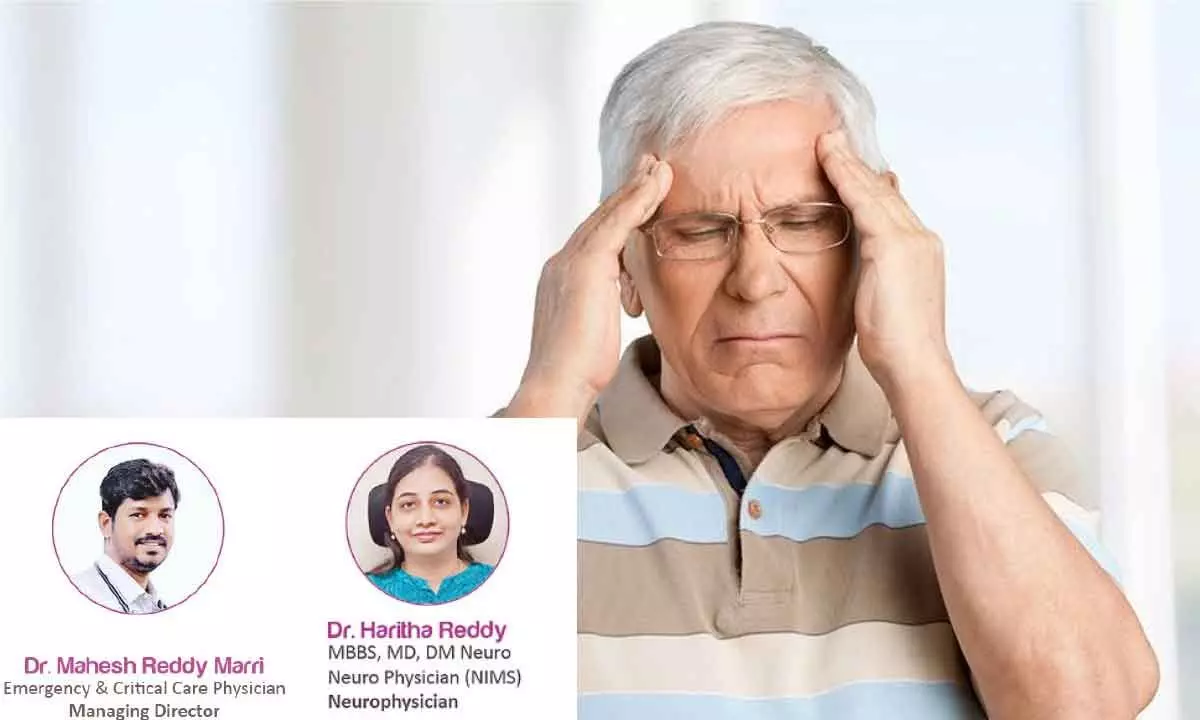Live
- Three persons admitted to hospital for diarrhea treatment
- First Star Outside Milky Way Captured: WOH G64 is 2,000 Times Larger Than the Sun
- Sikkim govt to constitute state Niti Ayog: CM Tamang
- CBI books Rajasthan narcotics inspector for Rs 3 lakh bribe
- Rajasthan bypolls: A tough contest between BJP and Congress
- Albania joins SEPA, paving way for EU integration
- Japanese government approves 250-billion USD economic package to ease price pain
- Six pharma companies to set up their units in Telangana
- The Unstable Events of a 17-Wicket Day in Perth: India vs Australia
- Dutch FM's Israel trip cancelled after Netanyahu's arrest warrant
Just In
All About Haemorrhagic Stroke


Dr Mahesh Reddy Marri, Emergency&Critical Care Physician, Managing Director and Dr Haritha Reddy, MBBS, MD, DM Neuro, Neuro Physician (NIMS) of One Hospitals talk about the haemorrhagic strokes
Stroke is classically characterized as a neurological deficit attributed to an acute focal injury of the central nervous system (CNS) by a vascular cause, including cerebral infarction, intracerebral haemorrhage (ICH), and subarachnoid haemorrhage (SAH), and is a major cause of disability and death worldwide
Cerebral haemorrhage is a cerebrovascular disorder that involves escape of blood from blood vessels into the brain and its surrounding structures. The leakage of blood causes clinical symptoms similar to those associated with a TIA or infarction.
In a cerebral haemorrhage, the initial neurologic deficits are due to the direct irritant effects of blood that is in direct contact with brain tissue. Subarachnoid haemorrhage: Bleeding into the subarachnoid space (the space between the arachnoid membrane and the pia mater of the brain or spinal cord).
Life style modifications:
• Go for a 15-minute jog before breakfast every day.
• Require more effort and make you breathe harder and faster (‘huff and puff’).
E.g. jogging, aerobics, fast cycling, many organized sports and tasks that involve lifting, carrying or digging.
• Break up long periods of sitting as often as possible.
• Be aware of time spent in front of the screen.
• Manage blood pressure, blood sugar and blood cholesterol levels.
• Prevent and control heart disease and type 2 diabetes.
• Improve posture, mobility and balance.
• Reduce the risk of falls and injury.
• Maintain your ability to do everyday tasks.
• Avoid alcohol consumption
• Quit smoking
Dietary Modifications:
Foods to be taken:
• Nuts
• Green leafy vegetables
• Citrus fruits
• Garlic
• Whole grains
• Tomatoes
• Greens, beans, and sweet potatoes are excellent sources of potassium
Foods to be avoided:
• High cholesterol foods
• Salty foods
• Dairy
CORONARY ARTERY DISEASE
It’s the term given to heart problems caused by narrowed heart arteries. When arteries are narrowed, less blood and oxygen reach the heart muscle. This can ultimately lead to heart attack.
HIGH RISK GROUP
Although all chest pain cases are not due to cardiac issues, signs STEMI include mild to severe chest pain and breathlessness. In patients having risk factors like being a smoker, diabetic, hypertension having sedentary life style and strong family history of heart attack.
WHAT SHOULD BE DONE
In case of chest pain or even breathlessness in people with high risk factors, the patients should be rushed to qualified cardiologist or physician for diagnosis. If better to rush to a hospital with a 24x7 cathlab facility. In STEMI, the first three hours of onset of chest pain and breathlessness are golden hours. After 3 hrs damage of to heart muscle begins and rapidly progress to heart failure. If a patient comes after 1-2 days of chest pain chances of death increase manifold.

© 2024 Hyderabad Media House Limited/The Hans India. All rights reserved. Powered by hocalwire.com






